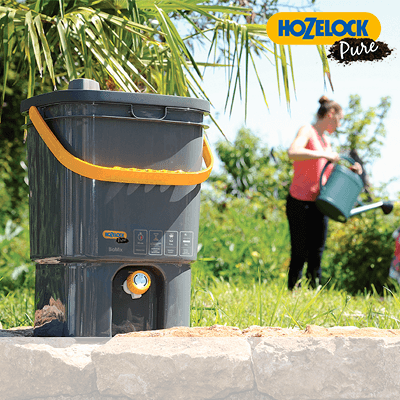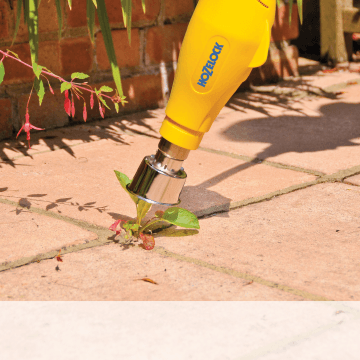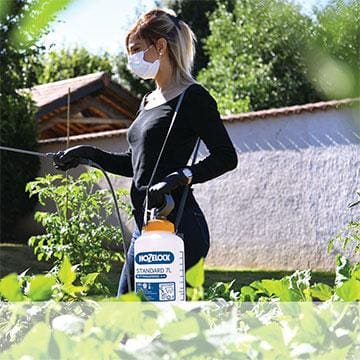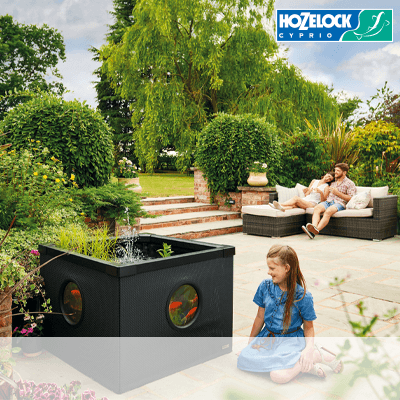Gemma, also known as @theplantparlourgram on Instagram, is a rare plant collector and consultant based in Surrey, Southeast England. Gemma posts tips and tricks for indoor plant care on her Instagram and online blog, with an aim to inspire a new generation of gardeners.
Winter can be a challenging time for houseplant lovers, but don’t be disheartened by a few crispy leaves and a lack of growth. Houseplants are meant for sunnier climates and tend to grow less during winter months.
To ensure your plants get a well-earned rest and survive the darker days, I’ve rounded up my top 5 tips for healthy houseplants in winter. Follow these essentials and your winter houseplant care regime will be tip-top, with your plants ready to spring back into action in March!
Adjust your watering schedule
Houseplants need less water during winter months, so reduce the amount of water you give your plants. A healthy winter watering schedule will make sure you don’t over-water or under-water your houseplants. Plants like calatheas, palms and carnivorous plants are particularly susceptible to inconsistency, and like to be kept at just the right wetness!
If you’re struggling with lots of little black flies near your houseplants, then the chances are that you’re overwatering your plants and allowing the soil to remain too wet. Fungus gnats breed in wet soil and their presence could be a sign that your plant is sitting in water.
Are you worried about root rot and looking for a solution? The Aquasolo water drippers by Hozelock will help you manage watering your houseplants in winter. Simply screw a bottle of water onto the Aquasolo cone, turn it upside down and place the nozzle in your houseplant pot. To maintain a current pulling the water downwards, make a prick in the top of the bottle with a pin. Et voilà!
Look after leaves
Humidity naturally reduces when our radiators turn on during the winter months, so make sure plants are kept happy by adjusting the water vapour in the air. You can use the Hozelock Decorative Trigger Sprayer to directly mist your leaves, increasing moisture levels. The water will slowly evaporate from the leaf and keep your plant feeling like it’s in a rainforest!
Your houseplants naturally receive less light in winter months, so keep their leaves dust-free to make sure nothing obstructs their surface. Take a microfibre cloth or gloves and wipe away any dust and dirt on top of your leaves, to guarantee happy houseplants that receive a maximum amount of light.
Wiping your leaves regularly gives you the advantage of keeping on top of pests. If leaves aren’t fresh and green, they may have been nibbled. Yellowing leaves, tiny spot marks and very fine webbing are signs of spidermites. I recommend wiping your leaves down with a neem oil solution to eradicate the problem. Mix 8 millilitres of neem oil into the Hozelock Decorative Trigger Sprayer with 8 drops of dishwasher soap, topping with hot water. Spray the solution onto each leaf of your plant and rub clean with a microfibre cloth.
Keep plants out of draughts
Houseplants are similar to humans in that they don’t like to be too hot or too cold. Make sure plants aren’t left in draughty areas on cold windowsills or near doors. Unheated conservatories can be a death sentence for tropical houseplants in winter, so move your sun-loving plants to a warmer location.
Ensure houseplants are moved away from radiators as hot air currents can be damaging to houseplants in winter. Warm air rises, causing brown or yellowing leaves, burning plants on shelves and windowsills above them. Heaters also dry the air around your houseplants, meaning they don’t get enough moisture and drying the soil that they’re in.
Keeping temperatures consistent for your plant is the best way to keep them healthy during winter. Most houseplants like temperatures between about 16 and 24 degrees centigrade the best, so try to keep plants in an area that stays comfortably within this range.
Boost light
Light levels in the UK are pretty abysmal during winter, so houseplants tend to grow much more slowly than they do at other times of year. Plants depend heavily on light to make sugar for energy. As the amount of daylight hours is shorter in winter and the sun’s rays are less strong, less light reaches the earth. The result is that your plants start to feel a little sleepy!
During winter months, try moving your houseplants closer to windows, to increase the amount of natural light available to them. You might find that they react well to increased sunlight. Don’t forget to move them back out of direct sunlight in the summer though – especially if they’re not a succulent or cactus!
Another option is to increase light levels by adding artificial lights to your home. Plants react well to grow lights and they come in different shapes and sizes, to suit every need! The simplest solution is a grow bulb, which can be placed in an ordinary light fitting. Just set a timer on the device to give your plants a lighting boost for up to 12 hours a day!
Allow your plants to rest
A few dropped or discoloured leaves is natural in winter and tropical plants tend to decline a little. Receiving less light, heat, and nutrients, houseplants tend to push less new growth and sacrifice old foliage. Don’t worry though, most make a full recovery in spring, with the right winter houseplant care!
Remember to avoid repotting your houseplant during winter months. Many tropical plants go dormant, meaning that their root growth slows down or stops completely. When spring comes around and your plant is showing signs of new growth, you can consider repotting again – so hold off until then!
Allow your houseplants to rest by reducing fertilisations. If your plant isn’t growing very much in winter, then it won’t need the same amount of energy as it does in summer. Ensure you keep your plant happy by preventing unwanted mineral build up in the soil. Don’t fertilise until you see the first signs of spring outside!











































